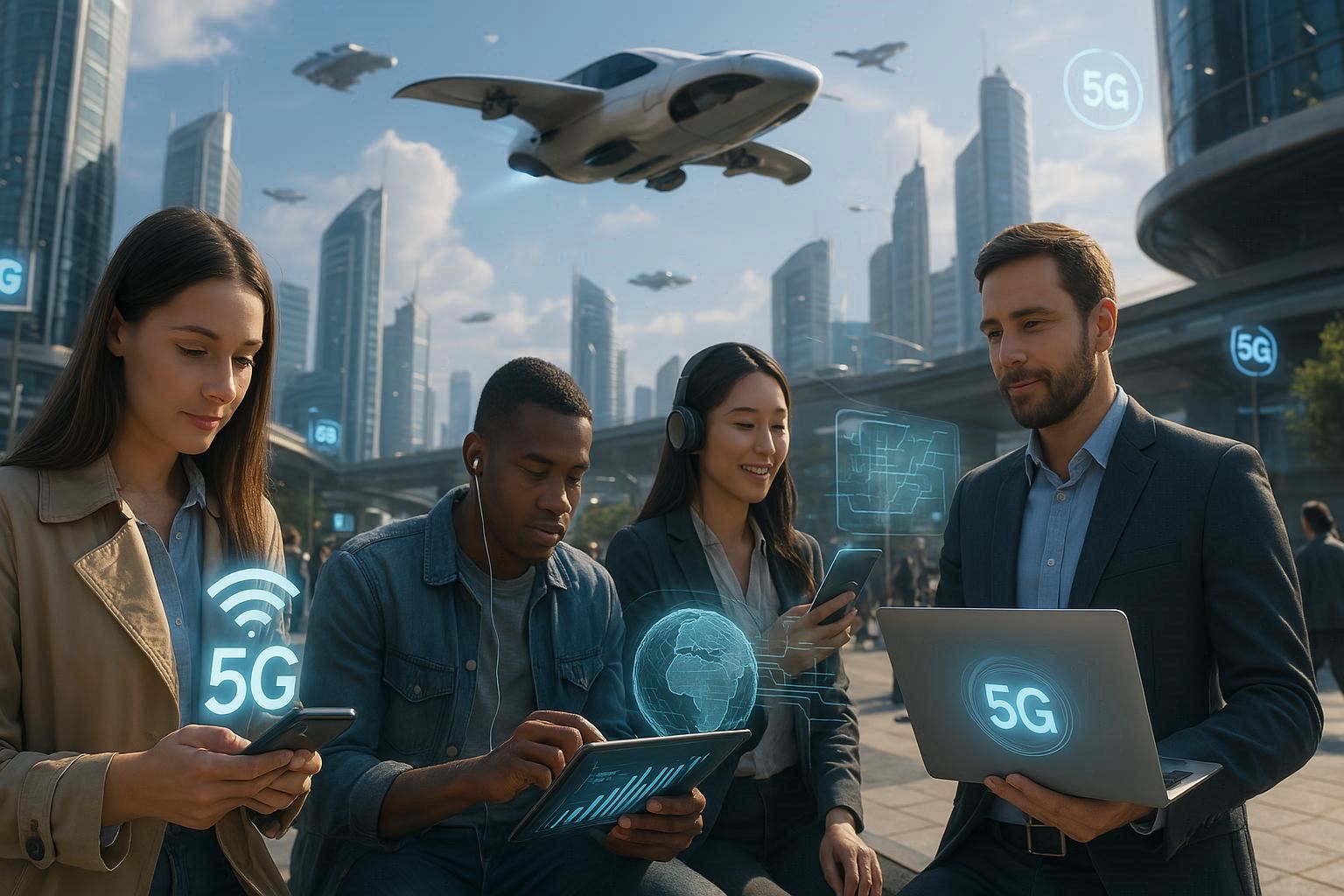Connectivity is the backbone of the modern digital world. Over the past few decades, we have moved from 2G mobile phones with simple text messaging to 4G networks that enable fast video streaming. Today, 5G is the new global standard, delivering lightning-fast speeds and ultra-low latency that transform industries and daily life. But the story does not end with 5G. Research into 6G has already begun, promising even more revolutionary changes.
This article explores how 5G is reshaping the world in 2025, the industries it impacts most, the challenges it faces, and what lies ahead with the next generation of connectivity.
1. What Is 5G?
5G stands for the fifth generation of mobile network technology. Unlike previous generations, 5G is not just about faster internet on smartphones. It provides ultra-high bandwidth, low latency (response times), and the ability to connect billions of devices simultaneously. This makes it the foundation for the Internet of Things (IoT), smart cities, and future innovations like autonomous vehicles and advanced robotics.
In simple terms, 5G is not just an upgrade—it is a transformation in how people, businesses, and machines communicate.
2. How 5G Is Transforming Industries
2.1 Healthcare – With 5G, doctors can perform remote surgeries using robotic arms, and patients in rural areas can access telemedicine with real-time video quality. Wearable health monitors transmit data instantly to hospitals, allowing faster response to emergencies.
2.2 Transportation – Autonomous vehicles rely on ultra-fast, low-latency connections to navigate safely. 5G enables vehicles to communicate with each other and with traffic systems, reducing accidents and improving traffic flow. Smart logistics also benefit from real-time tracking of goods worldwide.
2.3 Entertainment – Streaming in 4K and even 8K resolution becomes seamless with 5G. Virtual reality (VR) and augmented reality (AR) experiences are now smoother, enabling immersive gaming, remote concerts, and interactive events. By 2025, entire industries in media are being reshaped around high-speed connectivity.
2.4 Education – Remote learning is enhanced with 5G, making video conferencing and interactive digital classrooms accessible to millions. Virtual labs and simulations allow students to learn complex subjects without physical resources, bridging the gap between developed and developing nations.
2.5 Manufacturing – Known as “Industry 4.0,” factories are becoming smarter with AI and 5G-powered automation. Machines communicate with each other in real-time, reducing downtime and increasing productivity. Predictive maintenance also prevents costly breakdowns.
3. Benefits of 5G for Consumers
For everyday users, 5G means faster downloads, smoother video calls, and better gaming experiences. But beyond entertainment, it also improves quality of life. Smart home devices, connected appliances, and wearable gadgets perform better when connected through 5G. For example, a smart fridge can track food expiry dates and order groceries automatically, while security systems can instantly alert homeowners to suspicious activity.
4. Challenges Facing 5G
4.1 Infrastructure Costs – Building the massive infrastructure needed for 5G, including towers and fiber optics, is expensive. Many developing countries struggle to roll out 5G due to high costs.
4.2 Security Risks – More devices connected means more opportunities for cyberattacks. Protecting sensitive data in a hyper-connected world is one of the biggest challenges for governments and businesses.
4.3 Health Concerns – Although scientific studies show 5G radiation is safe, misinformation continues to spread. Building public trust and ensuring transparency remain critical for adoption.
4.4 Digital Divide – While urban areas enjoy 5G, rural communities often lag behind due to limited investment. Without equal access, the gap between connected and unconnected populations could widen.
5. Looking Beyond: The Rise of 6G
Even as 5G expands globally, researchers are already working on 6G. Expected to launch around 2030, 6G will deliver speeds up to 100 times faster than 5G. It will integrate advanced technologies like artificial intelligence, quantum computing, and holographic communication. Imagine attending a meeting where holograms of colleagues appear in your living room or learning through immersive holographic classrooms—this is the promise of 6G.
6. The Future of Connectivity
The impact of 5G and future networks goes beyond faster internet. It is about creating a more connected, efficient, and sustainable world. From smart agriculture that uses sensors to reduce water waste to smart grids that optimize energy usage, high-speed connectivity plays a critical role in addressing global challenges like climate change, healthcare access, and education inequality.
Conclusion
5G in 2025 is much more than just speed—it is a revolution in connectivity that empowers industries, governments, and individuals. While challenges such as cost, security, and digital inequality remain, the benefits of 5G far outweigh the risks. The journey does not end here, as 6G promises to open even greater possibilities in the coming decade.
Connectivity has always driven progress, and with 5G and beyond, the world is entering a new era where technology bridges gaps, creates opportunities, and transforms how humanity lives and works.

